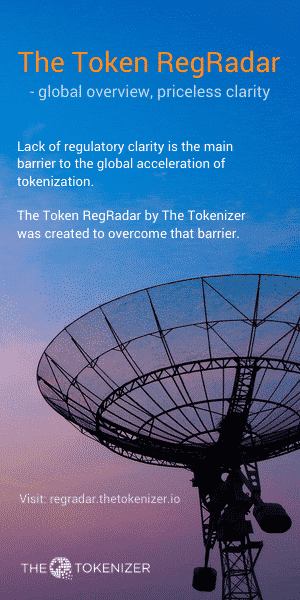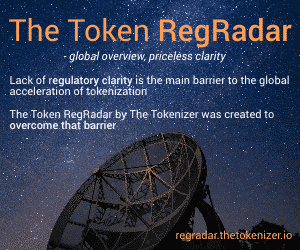Blockchain, IoT and AI — A Perfect Fit
By Riccarda Joas, Jonas Gross, Philipp Sandner
Blockchain, IoT, and AI are innovative technologies which will pave the way of digital transformation and will disrupt various industries. These three technologies will converge and will create new business models: Autonomous agents (i.e., sensors, cars, machines, and other IoT devices) will act as own profit centres 1) that have a digital twin leveraging IoT, 2) that autonomously send and receive money leveraging blockchain technology and 3) that autonomously make decisions as independent economic agents leveraging AI and data analytics. We argue that this convergence of technologies will drive the development of such autonomous business models and the digital transformation of companies.[1]
Introduction
Today, blockchain technology, internet of things (IoT), and artificial intelligence (AI) are remarkable innovations, which will improve business processes, bring new business models into existence and disrupt whole industries:
- Blockchain, for example, can increase trust, transparency, security, and privacy of business processes by providing a shared, decentralized distributed ledger. Precisely, blockchain technology or, in general, distributed ledger technology can store all kinds of assets similar to a register.
- IoT drives the automatization of industries and user-friendliness of business processes, which is essential for the German and the European industry.
- AI improves processes by detecting patterns and optimizing outcomes of these processes.
Currently, the interconnection between these innovations is mainly neglected. However, these innovations can and should be applied jointly and will converge in the future. A possible connection between these technologies could be that IoT collects and provides data, blockchain offers the infrastructure and sets up the rules of engagement while AI optimizes processes and rules. By design, blockchain, IoT and AI are complements and can exploit their full potential if applied combined.
This article discusses the added value, which blockchain, IoT and AI can provide for companies. We argue that the convergence of these technologies can be particularly beneficial for data management, identity management and the automatisation of business processes.
Data management
Standardization of data
IoT devices, such as sensors, machines, cars, or smart grids, collect a high amount of data. This data is often stored in a centralized database. Typically, these data lack standardization since different legacy systems for collecting and storing data are being used. Blockchain technology could support the standardization of data by setting up a harmonized digital platform for IoT data accessible for multiple parties. On blockchain systems, data is stored in one data format due to the use of hash functions. Therefore, the data would be highly standardized. Moreover, the size of the stored data would be heavily reduced since hash functions transform the obtained data into a string of a specific length. Consequently, data management could be optimized by increased standardization of data.
Data privacy and security
In blockchain systems, the underlying cryptography enables a high degree of privacy. On most blockchains, e.g., the blockchain used for Bitcoin or Ethereum, transactions are conducted pseudonymous. However, it is also possible to enable completely anonymous transactions which is, for example, the case with Monero or Zcash. The architecture of blockchain systems i.e. private/public key infrastructure also allows full encryption of stored and transmitted data such that, if desired, only the device itself can read and write its own data.
The privacy of data is especially beneficial in the context of IoT. In IoT, machines, and devices store a high amount of sensitive data. It is essential to ensure the privacy and security of stored data. It is common practice to send IoT data directly from the machine to the respective database for collection purposes. However, this data does not have a high degree of privacy as it is not encrypted. Blockchain technology adds value as it can easily ensure the privacy of the collected data. However, there is a trade-off between a high level of privacy and control for illicit activities. In case transactions are anonymous, it is not possible to infer the name and the address of the transaction sender. This anonymity features illicit activities such as money laundering or terror financing. In this case, AI can be helpful and can increase security by detecting illicit activities. Yin et al. (2019) propose to use AI, leveraging data analytics, to reduce the risk of illicit activities on the blockchain, which results from the anonymity of transactions. Note that AI technologies benefit from the high amount of provided IoT data as AI algorithms learn from data.
Scalability
A key limitation of IoT is the management of the massive amount of collected data. To improve scalability, the use of blockchain technology and AI can be highly beneficial. Opponents of blockchain technology argue that blockchain systems are per se not scalable because consensus mechanisms such as proof-of-work are very energy-consuming. However, there are alternative consensus mechanisms such as proof-of-stake or proof-of-authority, which are more energy-efficient and are scalable. Of course, consensus mechanisms will be and have to be further improved. To reach a higher level of scalability on a blockchain, AI can be helpful. Liu et al. (2019) suggest the use of a performance optimization framework for blockchain-enabled IoT systems. This system could be based on machine learning. The authors suggest a “DRL-based algorithm to dynamically select/adjust the block producers, consensus algorithm, block size, and block interval to improve the performance”.
Authentication via a blockchain-based identity
Furthermore, blockchain technology can be applied for authentication purposes and is able to increase trust in network participants by managing the identity of IoT devices. In general, identity management typically refers to individuals and companies but can also refer to IoT devices and machines. Blockchain-based identities will make sure that transaction parties will receive a digital identity, which is based on their actual “real” physical identity: for individuals identity cards and for companies their commercial register entry. Based on such identities, transactions between individuals and companies — e.g. car sharing — but also between individuals and machines — e.g. passenger transport of an autonomous car — or between two machines — e.g. autonomous car pays for parking — can be conducted and processed in an efficient way with low transaction costs and a high transaction speed.
IoT Analytics estimates that more than 20 billion devices will be connected to the internet by 2025. These devices will partly be connected to a payment network requiring a new payment infrastructure. Individuals, companies, and machines must be registered with their digital identities in order to participate in this new payment network. Blockchain technology is a perfect fit to provide a system for installing and managing digital identities in a secure and efficient manner. Therefore, identity management on the blockchain will be of major importance in the future. As with conventional centralized systems also the blockchain identity system has to comply with data protection laws. In fact, blockchain technology with its inherent access systems and encryption processes is even better than non-blockchain-based systems able to, first, protect data by design, second, organize the ownership of data and, third, facilitate the monetization of data. Blockchain also enables security of identity as the records are immutable and difficult to forge.
Automatization via smart contracts
Another field that highly benefits from applying blockchain, IoT and AI jointly is the automatization of business processes. Smart contracts have tremendous potential to yield efficiency gains in various sectors but are currently not heavily adopted in the industry. This is due to the fact that classical smart contracts require crypto assets. However, companies are typically reluctant to use crypto assets because of regulatory and economic limitations. The main drawback of crypto assets is their price fluctuations. If a smart contract is denominated in crypto assets, the receiving party is exposed to a high exchange rate risk due to the volatile price. Even if coins exert a high level of price stability (stablecoins), they might not be adopted by the majority of industrial companies due to several drawbacks: First, stable coins are currently unregulated. Hence, risk-averse companies do not seek to use these assets. Second, the IT and accounting systems of companies are not denominated in crypto assets but in fiat currencies like the Euro or the US dollar. Converting stable coins into fiat currencies for accounting purposes is an operational burden as it costs both personnel and financial resources.
The blockchain Euro
There is only one way how smart contracts can unfold their full potential. A blockchain-based fiat currency is necessary to “flow-through” the smart contract. Only a blockchain-based digital Euro would enable Euro-denominated smart contracts, such that IoT devices can directly offer services on their own like pay-per-use, leasing, and factoring. Due to a digital blockchain-based Euro, such new business models could become reality: fully automated devices making decisions on their own while leveraging AI and “economically surviving” by using blockchain for financial transactions while implementing a profit centre logic on the device-level.
With such digital blockchain-based currency, micropayments for IoT devices could be conducted easily and cost-effectively. All transactions denominated in the blockchain-based currency would be directly included in internal accounting and IT systems and would not have to be converted. A further advantage would be that such a blockchain-based Euro would comply with current regulation. First startups like CashOnLedger and Monerium have developed such currencies in 2019. They use e-money licenses for the tokenization of fiat currencies. In contrast to crypto-assets and stable coins, in particular, companies demanding such payment solutions do not have to fear regulatory uncertainty since all players act under existing regulation.
Central bank digital currencies
As previously described, a blockchain-based Euro is currently issued by banks and e-money institutes. Also, the central bank could launch such a digital currency. In the literature, this is called “central bank digital currency” (CBDC). According to a recent study by the Bank for International Settlements (Boar, Holden, Wadsworth, 2020), more than 70 central banks worldwide analyze implications from CBDC. However, no central bank has yet introduced such a currency. Nevertheless, central banks are starting to engage with digital currencies e.g. the ECB announced the project “EUROchain”, which will be a CBDC prototype developed on the Corda DLT framework.
An ECB-issued blockchain-based CBDC would enable the use of central bank money for smart contracts. Why is this necessary? What are the advantages of a digital Euro issued by a central bank compared to a digital Euro issued by e-money institutes? E-money counts as commercial bank money while money provided by the central bank is central bank money. Even if both kinds of money represent a digital version of the Euro, in the case of bankruptcy, commercial bank money could default, whereas central bank money is a claim to the central bank and cannot default. This difference gets highly relevant in case of financial turmoil when banks and e-money institutions potentially face bankruptcy.
Monetization of IoT devices via tokenization
Besides improving data management, supporting the authentication of network participants and facilitating the automatization of business processes, blockchain technology can unlock new business models for the monetization of IoT devices. Blockchain technology enables the dematerialization of assets (“tokenization”).
An example: Think about a lamp (e.g. a street light), which has its own (blockchain-based) identity and operates with a blockchain-based Euro. The use of blockchain technology makes the lamp an autonomous entity, operating “on its own”. Via smart contracts, direct payments to the lamp are possible. If a respective payment is received the lamp will turn on. Such payments can be provided by individuals, companies or even the public administration. As a consequence, pay-per-use payment schemes become feasible.
These lamps can further be tokenized so that investors can invest in them in the form of digital assets. Investors would have an incentive to build and maintain the lamps on a full scale as investors receive a share of the lamp’s profits. By providing incentives for investors to invest in building and maintaining the lamps, a new wave of investments could be generated. Tokenization is not only beneficial in the case of lamps but also for all kinds of IoT devices, such as sensors, cars, machines or cameras. The only requirements for tokenization is a connection to the internet and to a blockchain network.

Conclusion
Blockchain, IoT and AI are innovations providing tremendous benefits for security, transparency, immutability, privacy and the automatization of business processes. However, the impact of these innovations is even higher when blockchain, IoT and AI are combined. We argue that these innovations will converge in the future, driving the digitization of the industry. This convergence will increase the quality of data management by reaching a higher degree of standardization, privacy and security of data. Further, new business models are enabled such that autonomous agents (e.g. sensors, cars, machines, trucks, cameras, and other IoT devices) can be set up as profit centres that autonomously send and receive money. We recommend executives to engage with these technologies in order to realize efficiency gains. Blockchain technology, combined with IoT and AI, will pave the way to a new age of digitization.
References
Boar, C., Holden, H., Wadsworth, A. (2020): Impending arrival — a sequel to the survey on central bank digital currency, BIS Paper №107.
Liu, M., Yu, R., Teng, Y., Leung, V., Song, M. (2019). Performance Optimization for Blockchain-Enabled Industrial Internet of Things (IIoT) Systems: A Deep Reinforcement Learning Approach. IEEE Transactions on Industrial Informatics.
Yin, H. H. S., Langenheldt, K., Harlev, M., Mukkamala, R. R., Vatrapu, R. (2019). Regulating Cryptocurrencies: A Supervised Machine Learning Approach to De-Anonymizing the Bitcoin Blockchain. Journal of Management Information Systems, 36(1), 37–73. https://doi.org/10.1080/07421222.2018.1550550.
Remarks
If you like this article, we would be happy if you forward it to your colleagues or share it on social networks. More information about the Frankfurt School Blockchain Center on the Internet, on Twitter, or on Facebook.
Riccarda Joas is an alumna of the Frankfurt School. She graduated from the Master of Finance program with her final thesis on the intersections between Blockchain and the Industrial IoT/AI. In her professional career as a consultant, she focuses on principle investors and private equity with a strong interest in AI, Blockchain and Industry 4.0 topics. You can contact her via mail ([email protected]) or LinkedIn (www.linkedin.com/in/riccardajoas).
Jonas Gross is a project manager and research assistant at the Frankfurt School Blockchain Center (FSBC). His fields of interest are primarily cryptocurrencies. Besides, in the context of his Ph.D., he analyzes the impact of blockchain technology on the monetary policy of worldwide central banks. He mainly studies innovations as central bank digital currencies (CBDC) and other cryptocurrency projects as “Libra”. You can contact him via mail ([email protected]), LinkedIn (https://www.linkedin.com/in/jonasgross94/), Xing (https://www.xing.com/profile/Jonas_Gross4) or follow him on (Twitter Jonas__Gross).
Prof. Dr. Philipp Sandner is head of the Frankfurt School Blockchain Center (FSBC) at the Frankfurt School of Finance & Management. In 2018, he was ranked as one of the “Top 30” economists by the Frankfurter Allgemeine Zeitung (FAZ), a major newspaper in Germany. Further, he belongs to the “Top 40 under 40” — a ranking by the German business magazine Capital. The expertise of Prof. Sandner, in particular, includes blockchain technology, crypto assets, distributed ledger technology (DLT), Euro-on-Ledger, initial coin offerings (ICOs), security tokens (STOs), digital transformation and entrepreneurship. You can contact him via mail ([email protected]) via LinkedIn (https://www.linkedin.com/in/philippsandner/) or follow him on Twitter (@philippsandner).
[1] This research and development project was funded by the German Federal Ministry of Education and Research (BMBF) within the funding number 02P17D020 and implemented by the Project Management Agency Karlsruhe (PTKA). The authors are responsible for the content of this publication.
Photo by Christopher Burns on Unsplash
More Articles about Blockchain:
And the Covid-vaccine winner is… the blockchain
Could blockchain have prevented the 2020 US elections´ fiasco?
You Might also Like















